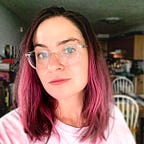The Mom Test — Book Summary
aka People will lie to you and what to do about it
The Mom Test by Rob Fitzpatrick is one of my favorite books about user/customer interviews. It’s a practical guide to talking to customers. I tried to summarize the points that were most useful for my practice.
What I found particularly useful where examples of questions that are not useful (like “Would you buy a product that does X?”) and suggestions how to fix such questions.
TLDR
This book talks about how you should not ask your mom if she will use your app. She will say yes, NOT BECAUSE SHE WILL USE IT, but because she ️❤️loves ❤️ you.
Opinions are worthless
Client opinions can be swayed and can be lied about. We want facts about what they do, what they love and hate about it, what tools they have tried, are they actively searching for new tools, etc.
- Ask about facts not opinions
- Ask about past not the future or hypotheticals
- Especially don’t ask for hypothetical numbers — people will lie to please you
- Try to understand their goals, motivations, and pains
Bad Data
- Compliments
- Fluff (generics, hypotheticals, the future)
- Ideas (Write down people's’ ideas but don’t rush to add them to the todo list. Try to dig into the motivations and needs behind the request)
How to ask useful product questions
- Talk about their life instead of your idea. Don’t try to sell your idea, instead try to learn if they would use it
- Ask about specifics in the past instead of generics or opinions about the future
- Talk less listen more
How to find out if people in your mom’s customer group would buy your app
👩 👎 Don’t ask your mom directly if she would buy your cookbook iPad app.
👩 👍 Instead find out if she WOULD buy it by asking CLEVER questions. Ask her:
- how she uses her iPad
- how she finds apps for her ipad
- how she got her new cookbooks
- what’s the last thing she did on her iPad?
- did she use an app for that?
- how did she find other apps she has?
- what’s the last cookbook she bought for herself?
Examples of open ended questions
- What are the implications of that problem? (you will learn if the problem matters)
- Take me through the last time that happened? (asking for facts instead of generalizations)
- What else have you tried? (shows how important the problem is)
- How are you dealing with it now? (shows if it makes sense for us to look for the solution)
Examples of end of interview questions
- Who else should I talk to? (if people find your idea interesting they will recommend others)
- Is there anything else I should have asked? (at the end of the meeting people have a sense of what your intent is and they can help by guiding you to interesting topics)
Ask scary questions
Every time you talk to someone, you should be asking at least one question which has the potential to destroy your currently imagined business.
Plan to ask 3 big questions in every conversation. Have a list of the 3 most important things you want to learn from any given type of person. Update the list as questions change.
Love bad news
The goal of conversations is learning not pitching. If people are not excited about our idea it gives you that’s good learning for you. You should learn why they are not excited — is the problem not a big deal? Is your approach wrong?
Don’t go into conversations looking for customers, go looking for advisors. Learn instead of pitching.
Early Evangelists
You want to find early evangelists. People who are extremely excited about your solution. These are people who have the problem you are solving for, know they have the problem, have the budget to solve the problem, and have already cobbled together their own makeshift solution.
Customer Segments
Keep talking to people until you stop hearing new information. If you keep hearing new information it means your customer segment is too vague. It means you are putting together feedback from different kinds of customers.
If the customer segment is too broad you want to do customer slicing. Start with any segment and then keep slicing off subsets until you arrive at a place, where you know who you can go talk to and where you can find them.
You want to really understand your customers — their goals, frustrations, what else they have tried, and how they currently deal with it.
Start with a small segment and then broaden later. Having a specific small segment will make learning faster.
Things to do before and after interviews
Before:
- Choose 3 big questions. What do we want to learn from these people?
After:
- Update beliefs and 3 big questions
- Review (Which questions worked and which didn’t? How can we do better next time? Were there any important signals or questions we missed?)
